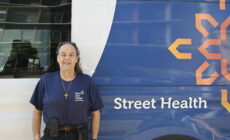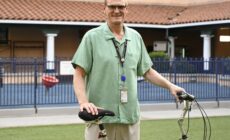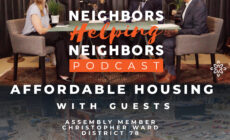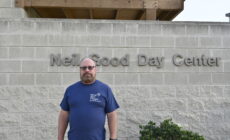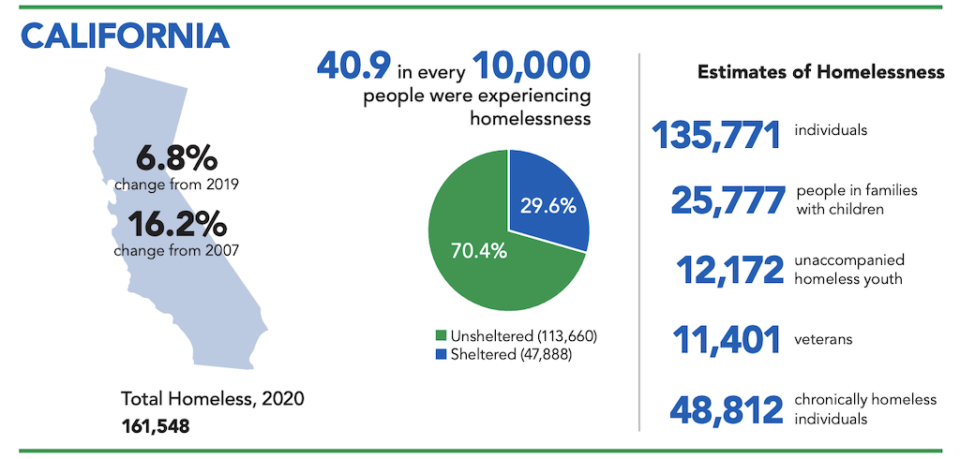
Table of Contents
Demographics and Statistics of the Homelessness Crisis in America
Every night more than half a million people in the United States are experiencing homelessness, and some demographic groups are disproportionately represented in the homeless population.
We believe that knowledge about the situation can help us and our community to take better care of our neighbors.
For over 70 years, Father Joe’s Villages has provided services and housing for those in need in San Diego. We have a comprehensive campus and scattered-site programs that house over 2,500 people nightly.
But who are these neighbors who lack affordable housing in our community?
We want to shed some light on the state of housing insecurity in our neighborhood and in Continuums of Care (CoCs – local planning bodies responsible for coordinating the full range of homelessness services in a geographic area) across the country.
Below is the best available census of the population of those experiencing homelessness from the federal government. The information comes directly from the U.S. Department of Housing and Urban Development Office of Community Planning and Development’s regular report on homelessness1 and is considered a point-in-time estimate of January 2020.
A Picture of Homelessness in the United States
A snapshot of homelessness statistics shows that there is much need for permanent housing intervention and homeless assistance in every state and territory.
On one night in January of 2020, it is estimated that about 580,466 people, around 18 of every 10,000 people in the United States, experienced homelessness.
61% of those who experience homelessness stayed in sheltered locations like homeless shelters, transitional housing programs, or vehicles. In comparison, 39% were unsheltered on the street, in abandoned buildings, in encampments, or other places not suitable for human habitation.
2020 was the fourth consecutive year that homelessness rates increased.
Around 6 in 10 people experiencing unsheltered homelessness were in urban areas, most in the nation’s largest cities.
2020 marks the first time since data collection began that more individuals experiencing homelessness were unsheltered than were sheltered. In addition, increases in the unsheltered population occurred across all geographic categories.
The number of individuals with patterns of chronic homelessness increased by 15% between 2019 and 2020.
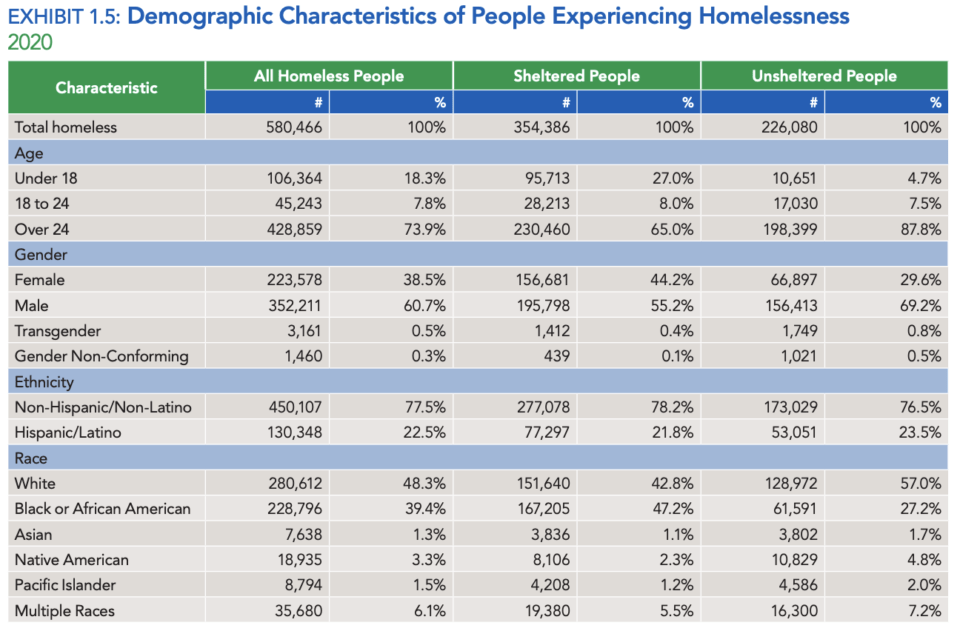
Demographic Information Across The Country
An overview of the homeless community shows that the rates of homelessness are not equally distributed across demographics like age, gender, sexual orientation, cultural background, or family status, with some groups having disproportionate representation.
Here are the major statistics:
Family Status
Households of adults comprised 70% of homeless individuals, with 36% of all homeless adults staying in unsheltered locations.
2020 was the first time the number of unsheltered people in families with children increased since data collection began—just under 172,000 people in families with children in 2020. While 90% of families with children were in sheltered locations, the number of unsheltered families grew by 13%.
Age
Across both household and shelter types, nearly three-quarters of people experiencing homelessness were adults aged 25 or older (428,859 people), 18% were children under the age of 18 (106,364 children). 8% were young adults aged 18 to 24 (45,243 young adults). Less than 1% of people experiencing homelessness, 3,598 people, were children under 18 without an adult present.
On a single night in 2020, 34,000 people under the age of 25 experienced homelessness on their own as “unaccompanied youth.” 90% were between the ages of 18 and 24.
Compared to the entire population of individuals experiencing homelessness, unaccompanied youth were more often non-white, Hispanic/Latino, female, or identifying as other than male or female.
Gender
The gender characteristics of all people who experience homelessness reflected the high percentage of men in the individual adult segment of the homeless population.
61% of people experiencing homelessness were men, 39% were women, and less than 1% were considered transgender or gender-nonconforming.
Ethnicity
Almost a quarter of all people experiencing homelessness were Hispanic or Latino, with a similar rate in sheltered and unsheltered locations.
Race
Racial minorities experience homelessness at a disproportionate rate. For example, black or African Americans make up 13% of the general population but 40% of the homeless population.
Indigenous people across the country continue to experience homelessness at even higher rates. Adjusted for population representation Native Hawaiians and Pacific Islanders have 159.8 homeless individuals for every 10,000 people. Native American representation is at 66.6 per 10,000. While 48% of all those experiencing homelessness are white, they are only 11.5 per 10,000 people when adjusted for demographic representation.
African Americans and indigenous people remained considerably overrepresented among the homeless population compared to the U.S. population. For example, the indigenous populations account for 1% of the U.S. population, but 5% of the homeless population and 7% percent of the unsheltered population.
In contrast, 48% of all people experiencing homelessness were white compared with 74% of the U.S. population. People identifying as Hispanic or Latino are about 23% of the homeless population but only 16% of the population overall
Homelessness in California
From 2007 (when the first point-in-time census was taken) to 2020 California has had a 16.2% increase in individuals experiencing homelessness with 70.4% being unsheltered.
California accounted for more than half of all unsheltered people in the entire country (51% or 113,660 people). This is nearly nine times the number of unsheltered people in Texas, the state with the next highest number.
31% of all homeless veterans are in California.
6.5% of Californians identify as black or African American, but account for nearly 40% of the states homeless individuals. A closer look at Monterey County, the percentage of black or African Americans is more than seven times higher than the county’s black population. While only 3.5% of people in Monterey County identify as black or African American, 25% of the homeless population does. (Information for this statistic is taken from Cal Matters.)
Closer to home, the picture looks even more dire: Imperial County, CA – on the southern border of California – reporting the highest rate of its category 87% of homeless residents make regular sleeping accommodation unsheltered.
Homelessness in San Diego
At least 7,600 people are experiencing homelessness every night in San Diego. Of those, nearly 4,000 men, women, and children lie down to sleep each night on sidewalks, in doorways, canyons, and alleys.
They live without regular access to food or water and no place to use the bathroom, wash their hands, bathe, or do laundry.
People who are homeless have greater health risks such as serious illness, mental health issues, substance abuse, and violence. They are 3-4x more likely to die prematurely than those who are housed, have 3-6x higher rate of illness than their housed peers, and are 10x more likely to be the victim of a violent crime.
Father Joe’s Village Mission And Values
There are people in our own community that are in dire need and we can help.
We offer effective solutions to counter the lack of resources and lack of access to equitable and affordable housing.
Father Joe’s Village has helped nearly 12,000 people achieve permanent housing in the last 10 years alone.
We have organized our services around four pillars of care to address the needs of those experiencing homelessness in our community:
We Meet Basic Needs
We restore dignity by combining evidence-based housing models with the services and support people need to get off the streets for good.
We provide emergency and bridge shelter, transitional shelter, rapid rehousing, permanent supportive housing, affordable housing, and provide ongoing support services.
We Invest In Children
Our services are dedicated to preparing children who are homeless for success. We do this by integrating behavioral, developmental, and health services.
This includes child development programs, childcare, behavioral health services, family literacy programs, after-school programs, parenting support, and mentorship.
We Make Health A Priority
Our Village Health Center provides comprehensive medical, behavioral, and dental health services, all in one location. We also help patients who want assistance with drug or alcohol use disorder.
Our providers triage and treat many chronic conditions, including diabetes, high blood pressure, COPD, and other acute and chronic conditions, to ensure our neighbors can achieve long-term wellness.
We Help Strengthen Self-Sufficiency
Our highly-trained staff provides education, vocational training, job development, and real-world tools for obtaining work through employment classes that teach skills, job application and development, and other job searching tools.
Help us prevent and end homelessness one life at a time today. Click here to donate time, money, or goods to help meet our greater community’s needs.
Sources:
- https://files.hudexchange.info/reports/published/CoC_PopSub_NatlTerrDC_2020.pdf
- https://www.huduser.gov/portal/sites/default/files/pdf/2020-AHAR-Part-1.pdf

